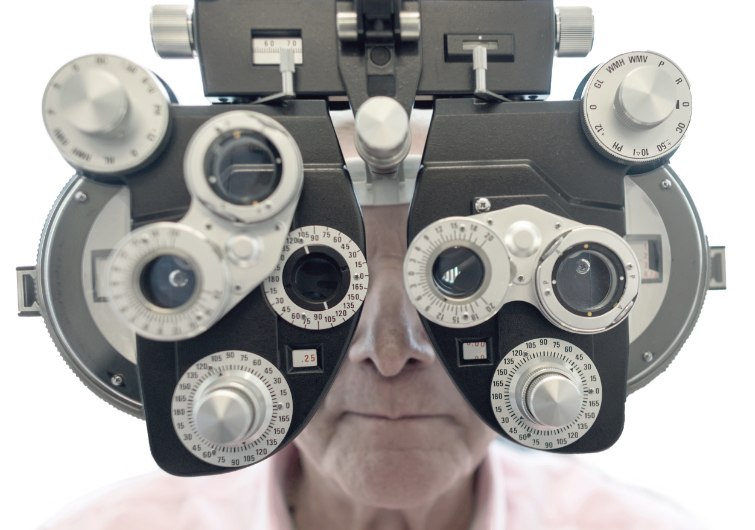The gaps between the bathroom tiles suddenly become wavy, the lines on a page in the newspaper, or in a book, also no longer appear straight but wavy. When looking at door or window frames, they also appear to be bulging. These are phenomena which the lay person often cannot explain and which understandably become unsettling, and will definitely be accompanied by fear of the unknown.
If the distorted vision is also accompanied by cloudiness, restricted vision and/or colours appearing less bright, the concern will understandingly be even greater.
Distorted vision involves a change in the centre of the retina. This is the point of sharpest vision, the macula.
At any rate, an appointment should be arranged with an eye specialist. The symptoms should ideally be described over the phone beforehand. This will ensure that the receptionist understands that an urgent appointment is needed so that valuable time for targeted treatment is not lost.
If an urgent appointment is not available, then the patient should request one at another practice.
The causes of distorted vision are varied. A range of investigations allows the doctor to precisely identify the trigger for the symptoms.
Where there is distorted vision, treatment starts with an eye examination.

Ursachen für verzerrtes Sehen
-
1. Age-related macular degeneration (AMD)
-
2. Macular oedema (collections of fluid in the centre of the retina)
The cause is usually diabetes mellitus or vascular occlusion.
-
3. Diabetic macula oedema
This diagnosis also involves a significant reduction in visual function. Distorted vision increases and visual acuity reduces significantly until reading and writing as well as many other activities can no longer be performed.
-
4. Macular hole surgery as the cause
If a macular hole has completely formed, massive visual complaints are present, which are also to be considered in connection with distorted vision.Hat sich ein Makulaloch komplett ausgebildet, liegen massive Sehbeschwerden vor, die auch mit verzerrtem Sehen im Zusammenhang zu betrachten sind.
-
5. Astigmatism (corneal irregularity)
In this case, dots are perceived as strokes instead of as real dots. The dots appear pulled apart. In irregular astigmatism, the cornea shows scarring based on injury or disease. Symptoms include eye pain, headaches, and a burning sensation in the eyes. Compensation is only possible with a hard contact lens.
-
7. Cataract
This diagnosis states that with age, the lens of the eye has become cloudy. The eyes are sensitive to glare from the sun or headlights and are light-shy. Blurred vision, a gray haze, and poor twilight vision are other symptoms. Color vision is also altered or worsened, as is contrast vision. Sometimes there are also double or multiple images or double contours. Often the strength of the spectacle lenses also changes. In many cases, only some of these symptoms occur. Treatment consists of cataract surgery, in which the cloudy lens is replaced by an artificial lens.
-
7. Epiretinal gliosis (macular pucker)
Just like a macular hole, this is a disease of the vitreoretinal boundary layer. The vitreoretinal junction is the connection between the vitreous body or its limiting membrane and the retina. In epiretinal gliosis there is a deformation of the macula triggered by traction. The retina is distorted by an overlying membrane.
-
8. Central serous chorioretinopathy (CSCR)
Yes, stress can literally go to your eye. It is not for nothing that distorted vision in men, and less frequently in women, is called manager’s disease. Due to stress, they often complain of gray dots and distorted lines because the retina has changed.
Fluid from the deeper layers of the eye, the choroid, enters under the retina. This causes the retina to bulge slightly. This happens because stress releases cortisol and so the vessels are changed. -
9. Migraine as a cause for distorted vision
This is probably more common than is often assumed. Here, the focus is on clarifying the cause of the existing migraine so that it does not progress further and manifest itself. Therefore, the examination by the ophthalmologist should ideally be accompanied by a neurological examination by a specialist (neurologist).
An EEG and imaging procedures such as a CT or MRI provide information about whether abnormalities are present that could be responsible for the existing symptoms. -
10. Irregularities of the cornea
These can also be responsible for the distorted vision in the form of adhesions, a curvature or caused by an accident or blow to the eye.
-
11. A retinal occlusion
This is not only noticeable by distorted vision, but also by repeated blurred vision. Occasionally, a dark haze is also perceived. In many cases, low visual acuity is present. Vision loss increases when retinal vein occlusion develops into macular edema.
-
12. Atypical ageing of the vitreous body
This cause can also be responsible for distorted vision, although not typically. In the further course, vitreous detachment, vitreous hemorrhage or even retinal detachment may occur. Usually “flying gnats” are seen, which are also called “mouches volantes”.


